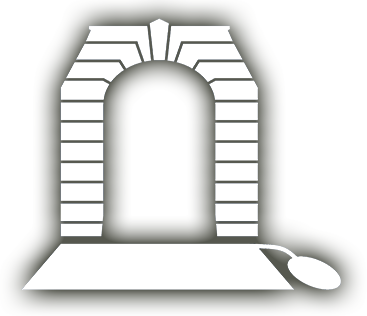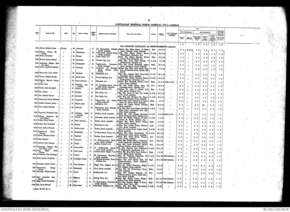
6529
GRAY, Edgar Willis Charles
| Service Number: | 2180 |
|---|---|
| Enlisted: | Not yet discovered |
| Last Rank: | Sergeant |
| Last Unit: | 50th Infantry Battalion |
| Born: | Magill, SA, Australia, date not yet discovered |
| Home Town: | Magill, Campbelltown, South Australia |
| Schooling: | Not yet discovered |
| Occupation: | Farm Hand |
| Died: | Goodwood, SA, Austrralia, 12 December 1966, cause of death not yet discovered, age not yet discovered |
| Cemetery: |
Centennial Park Cemetery, South Australia Cremated and interred. Interment expiry date; 28/11/2016. |
| Memorials: | Magill Honour Board |
World War 1 Service
| 12 Aug 1916: | Involvement Private, 2180, 50th Infantry Battalion, --- :embarkation_roll: roll_number: '19' embarkation_place: Adelaide embarkation_ship: HMAT Ballarat embarkation_ship_number: A70 public_note: '' | |
|---|---|---|
| 12 Aug 1916: | Embarked Private, 2180, 50th Infantry Battalion, HMAT Ballarat, Adelaide | |
| 25 Apr 1918: | Wounded GSW Neck | |
| 11 Nov 1918: | Involvement Sergeant, 2180, 50th Infantry Battalion |
Help us honour Edgar Willis Charles Gray's service by contributing information, stories, and images so that they can be preserved for future generations.
Add my storyBiography
At the age of eighteen, Edgar Gray – a farm hand and a Baptist- enlisted for the Army in 1916 on the 1st of May.
Leaving behind his single mother, his work as a farm hand and his home town of Magill, He embarked on the HMAT A70 Ballarat from Melbourne to England. Gray trained in Sutton Veny, Wiltshire with the 50th battalion until he left for Codford. Soon after, he was injured with a Gun Shot Wound (GSW) to the neck. He was then admitted to the Fifth Southern General Hospital.
Records then show that after his stint in hospital, Gray was promoted to Lance Corporal and discharged. He marched into ‘A.W.B.D’ in short order and then proceeded to France via Folkstone. From there, Gray was next logged in Long Bridge, Deverill.
On the twenty eighth of the ninth, 1918 Gray was promoted to Corporal, on the eighth of the eleventh, 1918 he was appointed Deputy Sergeant. On the tenth of the twelfth, 1918, Gray was instated as Sergeant by Sergeant William Shaw.
On the tenth of the second, 1919 he was Absent Without Leave (AWL) for two days and forfeited two days’ worth of pay.
At the conclusion of his service, he embarked for England to return to Australia on the third of the second 1919. Gray set foot on home soil at last on the eighth of the fifth, 1919. His enlisted service totalled 3 years and 46 days and his overseas time accounted for 2 years and 270 days.
Gray died in 1966 and was cremated and interred in Centennial park.
The fiftieth battalion was raised in 1916 in an effort to double the AIF. Comprised mostly of fresh recruits from south Australia and veterans of the 10th battalion, the 50th was a largely Australian force. The battalion, dubbed “Hurcombe’s Hungry Half Hundred” after it’s first Lietenant, after was soon called to action in France. In the two day fight, the Battalion suffered heavy losses.
For a year after this altercation, the battalion largely assisted behind the lines and worked in training camps. Early in 1917 the battalion assisted in the advance following the German retreat in Hindenburg Line. After two other battles- the Messines and Polygon – the Battalion was once again on trench duty.
A year after, in 1918, the 50th fought in Villers-Bretonnaux to dislodge the enemy. In 1919 the 50th merged with the 51st battalion.
Gray showed supreme ANZAC spirit, fighting with courage and dedication he earned his way up the ranks in only two years. He was determined to survive, shown by the way he lived through a gunshot wound to his neck of all places. He enlisted as soon as he was able even in the heart of the war to be able to contribute to his country and to the ANZACs. Gray was a good man and a good ANZAC.












